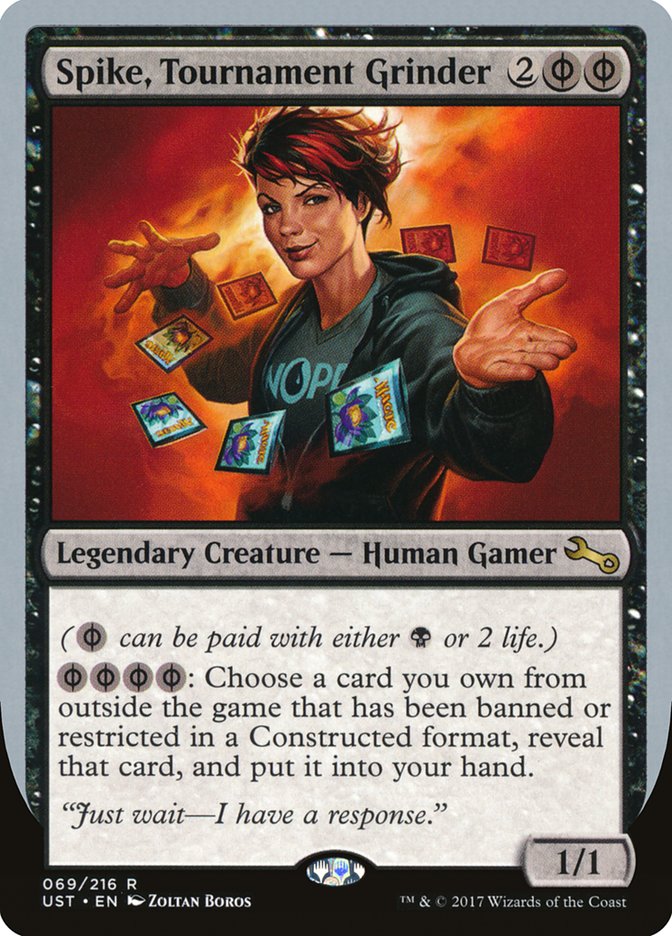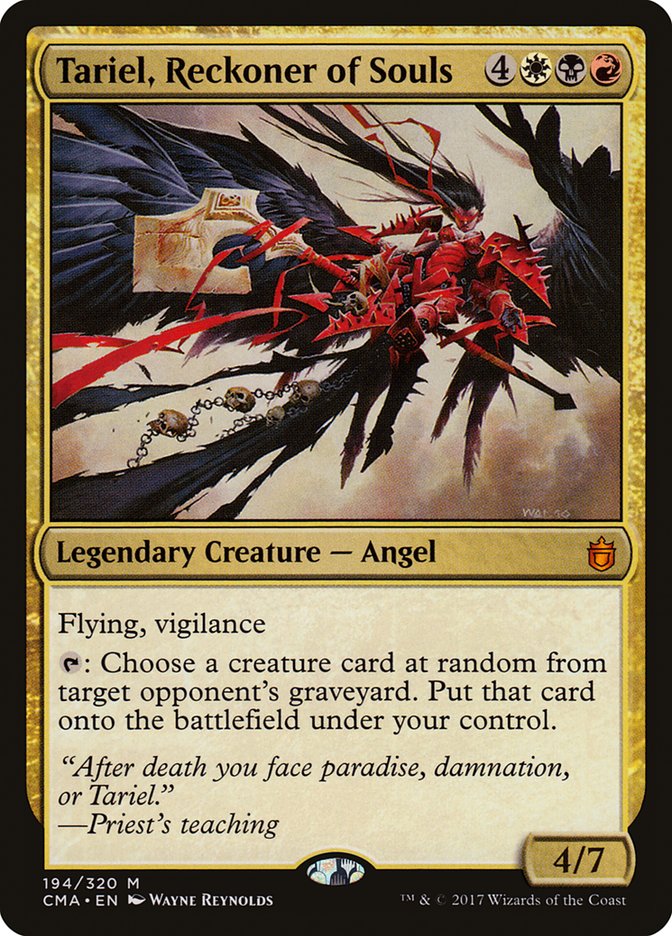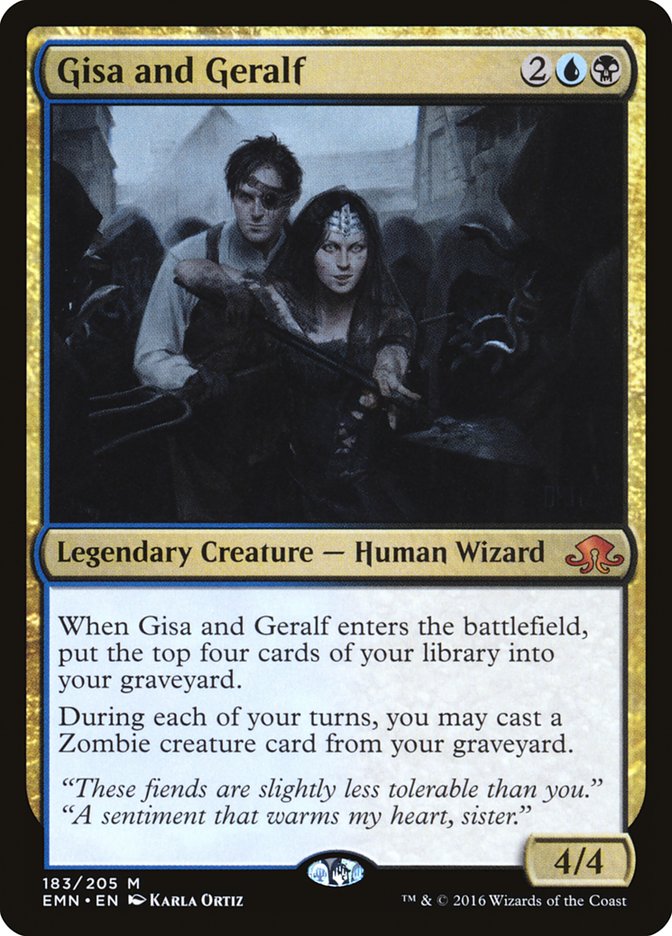All right.
Fine.
It would seem, in response to last week’s article about how everything in 2017 has, in fact, sucked, that there has been a vacuum at SCG since my departure about a year ago. Many of you wrote your congresscritters, and not about pressing matters such as net neutrality or healthcare. No, you flooded their lines with calls and their mailboxes with letters asking for my return. I received DM’s and PM’s about coming back, which was a super-nice alternative to the death threats I used to get. The bigwigs contacted me about making this a regular thing again, to which I replied: “Eh, okay.”
So here we are.
In the last year I have learned much about myself, such as:
- How to change a diaper.
- How to not get sick while changing a diaper.
- How to make a baby giggle non-stop.
- How to make sure my cats do not eat the baby.
- What dealing with a baby that is lactose intolerant is like.
- Oh my God babies are expensive.
But most of all:
- How to balance Magic with being a new parent.
One of my best friends, Randall, made a great suggestion to me when I sold most of my Magic cards last December. He recommended putting together some Commander decks, since they survive rotations, can be picked up and played any time, and they only get better as each set comes out. He didn’t have to sell me on the virtues of Commander, since it has long been my favorite format, but he was right. I could build some awesome Commander decks and play a few times a week at my local gaming stores to satiate my urge to sling carboard.
Typically, there are two kinds of Commander players:
1. Those who are not competitive and play mostly for fun.
2. Those who are hyper-competitive and play only to win.
However, the more you look, the more you’ll realize that a vast number of Commander players will fall somewhere in-between into this category:
1.5. Those who are competitive, but also love long games. They love winning just as much as having fun.
What is important to understand about these groups is that they all have fun in their own way, and it’s not beneficial to denounce either group. They may not mix well, but in the end, an LGS has a funny way of finding its own equilibrium. There were always be a few players who love massive battles that rage on for hours on end, only to be won by the girl who cast Warp World for 40. The other table might have some people that bow down to Tefari, Temporal Archmage and The Chain Veil by Turn 3. They’ll shuffle up and do it all over again.
Both of those worlds are important to the viability and survival of Magic in general.
Sheldon Menery espouses the tenets of Commander in a way that I never quite understood up until a year or so ago. I would build decks meant to win as early as Turns 2 or 3, but consistently on Turn 4. My reasoning was simple: I played Magic to win, and winning was fun. That correlation drove me in multiple facets of deckbuilding, and because I drew parallels to, say, Standard or Modern when it came to a 100-card format, I tended to do as much as I could to end a game before it ever began. That type of competitive drive is great for some people, but it wasn’t for me. But why?
When I sat down in a pod, I convinced myself that I had to win as quickly as possible or that game would be “boring.” What ended up happening to me was that those decks lost their luster swiftly. I was finding myself building deck after deck and selling off the pieces to the previous one, simply because I wasn’t enjoying myself at all. I took some time to gestate on what was wrong. I knew I loved Commander, but I also knew I wasn’t having fun with the decks I was piloting.
Then it hit me.
A few years ago I built Tariel, Reckoner of Souls.
It was supposed to be my “fun” deck. It abused graveyard interactions, played sweepers, and dragged games long so I could get the most out of cards like Living Death or Patriarch’s Bidding. It played Dragons, Demons, Angels, and all sorts of big creatures, along with cards meant to put creatures in my opponents’ graveyards so I could claim them as my own with Tariel. It was the most fun I had ever had playing Commander.
So I took it apart.
Tariel wasn’t competitive, and it didn’t win a lot of pods. In my stupidity, I placed efficiency over happiness; good times were swept to the side so I could kill an opponent on the fly. How silly, right? I never thought I would get that feeling back. But then I saw them.
A brother.
A sister.
Some Zombies.
Kylie Minogue was right: it was love at first sight.
Now, this deck definitely falls into the middle category I brought up earlier. It is competitive, yes, and fully capable of winning games. However, it’s not going to win them until you’re into double-digit turns, and it won’t suppress the table or prohibit anyone from having fun. That’s what we’re going for on this channel now: decks that are powerful, but that you can play with any group, Spike or Timmy.
Creatures (35)
- 1 Zombie Master
- 1 Carrion Feeder
- 1 Balthor the Defiled
- 1 Wonder
- 1 Graveborn Muse
- 1 Undead Warchief
- 1 Lord of the Undead
- 1 Vengeful Dead
- 1 Shepherd of Rot
- 1 Nantuko Husk
- 1 Golgari Thug
- 1 Stinkweed Imp
- 1 Corpse Connoisseur
- 1 Fleshbag Marauder
- 1 Lich Lord of Unx
- 1 Hedron Crab
- 1 Phantasmal Image
- 1 Grimgrin, Corpse-Born
- 1 Gravecrawler
- 1 Diregraf Captain
- 1 Blood Artist
- 1 Gray Merchant of Asphodel
- 1 Agent of Erebos
- 1 Sidisi, Undead Vizier
- 1 Liliana, Heretical Healer
- 1 Possessed Skaab
- 1 Zulaport Cutthroat
- 1 Geralf's Masterpiece
- 1 Diregraf Colossus
- 1 Prized Amalgam
- 1 Cryptbreaker
- 1 Lord of the Accursed
- 1 Plague Belcher
- 1 The Scarab God
- 1 Champion of Wits
Planeswalkers (2)
Lands (35)
- 1 Strip Mine
- 1 Underground River
- 3 Swamp
- 1 Island
- 1 Underground Sea
- 1 Ancient Tomb
- 1 Darkwater Catacombs
- 1 Unholy Grotto
- 1 Polluted Delta
- 1 Flooded Strand
- 1 Bloodstained Mire
- 1 Phyrexian Tower
- 1 Lonely Sandbar
- 1 Barren Moor
- 1 Cephalid Coliseum
- 1 Dimir Aqueduct
- 1 Watery Grave
- 1 Urborg, Tomb of Yawgmoth
- 1 Dakmor Salvage
- 1 Sunken Ruins
- 1 Drowned Catacomb
- 1 Crypt of Agadeem
- 1 Marsh Flats
- 1 Verdant Catacombs
- 1 Bojuka Bog
- 1 Creeping Tar Pit
- 1 Darkslick Shores
- 1 Nephalia Drownyard
- 1 Cavern of Souls
- 1 Nykthos, Shrine to Nyx
- 1 Temple of Deceit
- 1 Sunken Hollow
- 1 Fetid Pools
Spells (27)
- 1 Vampiric Tutor
- 1 Mystical Tutor
- 1 Living Death
- 1 Jet Medallion
- 1 Mana Vault
- 1 Sol Ring
- 1 Demonic Tutor
- 1 Mana Crypt
- 1 Personal Tutor
- 1 Diabolic Intent
- 1 Entomb
- 1 Buried Alive
- 1 Patriarch's Bidding
- 1 Ashnod's Altar
- 1 Phyrexian Arena
- 1 Talisman of Dominance
- 1 Mesmeric Orb
- 1 Snuff Out
- 1 Dimir Signet
- 1 Glimpse the Unthinkable
- 1 Damnation
- 1 Command Tower
- 1 Rooftop Storm
- 1 Zombie Apocalypse
- 1 Cyclonic Rift
- 1 Rise of the Dark Realms
- 1 Murderous Cut

The inspiration for this deck came from YouTuber Jolt539. Credit where credit is due.
Gisa and Geralf operate like a snowball that becomes an avalanche once it starts rolling downhill. What makes this deck a ton of fun is that it can win from multiple angles while simultaneously coming out of nowhere to steal victory from the table. It is a self-milling build that wants as many cards from your library in the graveyard as it can, as well as a primarily empty hand.
To achieve this, you play dredging creatures and lands that mill yourself. Once your graveyard is loaded with goodies, you begin replaying them from the dead zone. Gisa and Geralf allow you to cast a Zombie from the graveyard once each turn, and you’ll find that using that ability a few times is enough to build an early advantage with enablers like Entomb or Buried Alive, or a way to get back in the game after a sweeper. Unlike other Commander decks, we rarely care if our commander is destroyed, because that lets us exploit G&G’s mill to put even more cards into our yard.
From there, you’ll begin to develop a texture for how you feel you’ll need to win the game. You can do this through numerous ways:
A) An overwhelming amount of Zombies and Zombie lords pumping your army, giving you the ability to attack for huge chunks of damage.
B) Shepherd of Rot activations or Gray Merchant of Asphodel with a big but stalled battlefield will let you drain the entire table. Gray Merchant is also recurring when coupled with a sacrifice outlet and Gisa and Geralf!
C) Massive reanimations! Cards like Rise of the Dark Realms or Living Death will generally give you an insurmountable battlefield state made up of lords, creatures, and synergies.
D) Comboing the table out. With enough Zombie lords that cause life loss when other Zombies die, you can begin sacrificing your creatures to Nantuko Husk or Carrion Feeder to suck the life out of your opponents.
Your most important cards and the ones that are sought for most with tutors are your dredge creatures like Stinkweed Imp or Golgari Thug, but those pale in comparison to how busted one little artifact is in our deck:
Oooooooh boy. The Orb is what takes this deck from good to awesome in record time. There is no better feeling than dropping it on the table and passing the turn. It’s innocuous at first, only milling a couple of cards at once, but once it starts going, you’ll be flush with options and will have a graveyard filled with all your threats in no time flat.
From there, sequencing becomes very important as you begin to “go off.” This entails understanding which Zombies are the most important to have in play. Some of your biggest hitters might seem like the smallest, but they often act as the engines for the deck. Cryptbreaker plays an extremely integral role as both enabler and puzzle piece between the discard letting you get your dredge cards in the graveyard from your hand, and the draw effect giving you extra dredges.
Hedron Crab is the reason we play so many fetchlands, as it allows you to churn through your library. Remember, milling yourself is the biggest and most important thing you should be worrying about at the start of the game. Don’t worry if you mill over a spell or artifact that you might need later in the game, because you play cards like Possessed Skaab that can buy them back.
An Important Note
While you’re going to see a lot of “optimized” decks in this column week-to-week, it’s crucial to understand that your decks don’t have to be. Don’t have an Underground Sea? No problem! Want to play fetchlands but don’t own them? There are alternatives like Terramorphic Expanse or Evolving Wilds. Heck, I’m not playing Death Baron because of its price tag and the fact that I don’t think it’s very relevant to the deck. There are always options out there for more budget-friendly builds of decks that you like, and when it comes to Commander, there is no other format out there that lets you get away with it as easily.
Over time, we’re going to work together to put some of those budget decks together. When new Commander decks are released, we’ll discuss how to make them better, but doing so with the fact in mind that not everyone can spend thousands of dollars on their Commander decks, and that’s okay. They shouldn’t have to sit on the sideline, and we’ll make sure they don’t.
What Else You’ll See on This Channel
Although I keep up to date with competitive Magic (particularly Standard) and find myself glued to coverage every weekend to watch the latest SCG Tour stop, I’ll probably keep that talk to a minimum. I’ll leave the discovery of new tech to other strapping young bucks and fillies.
This weekly column will be for discussing Semi-Competitive Commander, fun Commander decks, budget Commander, card reviews, and more. We’ll go over pressing community and social issues, since that was always my favorite thing to do anyway. We’ll be provocative and scandalous, and we’ll rattle the rabble up as much as we used to, only this time I’ll do it with a little more gusto.
The Best Is Yet to Come
Being asked to come back has been wonderful, so I guess I have you to thank for reading, commenting, sharing, liking or hating, my work.
Next week will be a little more Commander with a lot more value.
May all of your brains be delicious, kiddies.








